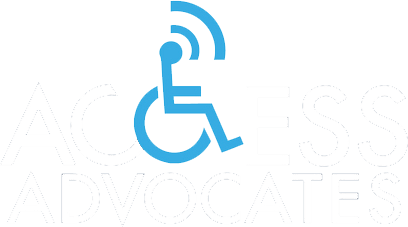The 2010 ADA Standards for Accessible Design include many new provisions that were not included in the 1991 guidelines. They include brand new and specific standards for the following nine categories of public recreational facilities:
1. Amusement rides – Newly designed rides must be placed on an accessible route. Rides for children or rides like bumper cars or without seats do not have to have wheelchair spaces, but every new ride must be “on an accessible route and must provide appropriate clear space.”
2. Boating – Boat slips must have a minimum number of accessible spaces (depending on the size of the facility), and accessible boat slips must be dispersed throughout. If boarding piers exist at the boat launch ramp, “at least 5% (but no fewer than one)” have to be accessible.
3. Exercise Machines – The facility must include “at least one of each type” of the exercise equipment, and the equipment has to be on an accessible route so that a person with a disability can access it.
4. Fishing piers – Newly designed, constructed or altered fishing piers must have accessible routes with at least one-fourth of the handrails not exceeding 34 inches high. Clear space has to be provided for the accessible railing, and turning space must be present on the pier.
5. Golf courses – Newly constructed or altered golf courses are subject to a variety of rules that cover the accessibility of electric golf cars. They include a minimum of four feet width for car paths, accessible routes to pick up the cars, access to teeing areas, weather shelters, driving ranges and putting greens.
6. Miniature golf – At least half of all the holes must be accessible. The holes must be on an accessible route and must be consecutive. The final hole must be located within easy access to the facility entrance or exit, without having to go back through holes already completed.
7. Play areas – The new accessibility rules (ramps, accessible routes, etc.) cover new play areas “designed, constructed, and altered for children ages two and over.” They include public parks, schools, childcare facilities and shopping centers.
8. Swimming pools, wading pools, and spas – Rules cover entry/exit accessibility for swimming pools, which include requirements for “a pool lift or sloped entry, and either a transfer wall, transfer system, or pool stairs.” Wading pools must have sloped entries, and spas must be equipped with a pool lift or transfer system.
9. Saunas and Steam Rooms – Must be accessible, have good turning space, and doors that don’t swing into the clear floor space.
So much for recreation, what else is new for 2010?
The 2010 ADA Standards for Accessible Design include new public building rules that cover jails and prisons and court rooms. For example visitor areas for prisons must be accessible. In courtrooms the jury area, witness stand, and even the judge’s bench, all must be accessible.
Then there are new rules for apartments and public housing. When federal housing rules apply, ADA defers to those standards. For everyone else the rule is that at least five percent of the units must accommodate persons with disabilities. There is also the “two-percent rule,” which is the percentage of units that must be available to people who have special communications-related needs.
Wondering whether your local recreational center or amusement facility needs to “ramp up” and get into compliance with 2010 ADA Standards for Accessible Design? Contact us and find out how you can advocate with us.

